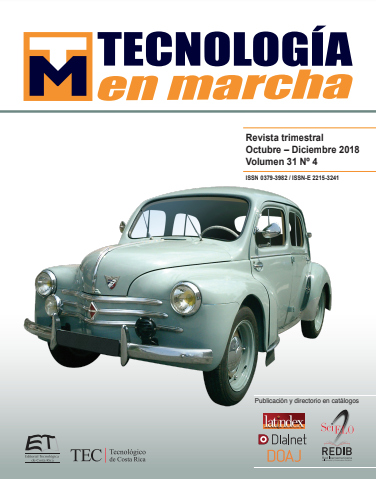Optimization of a metabolic pathway in Escherichia coli for the production of farnesene through the use of synthetic biology
Main Article Content
Abstract
Interest compounds generation using organic waste as raw material results in an economically and industrially viable option. Through synthetic biology is possible the design of microorganisms capable of using these residues as carbon sources in order to produce biofuels, vaccines, alcohol, oils and other products. Farnesene production and its precursors is possible through the genetic modification of microorganisms like Escherichia coli, introducing metabolic pathways capable of produce the interest compounds. After studying, optimizing and synthesizing the genes that make up the metabolic pathway of mevalonate, which originates farnesene, these were assembled together with several Anderson family promoters to transform E. coli and generate E, E, -farnesene from synthetic form.
Article Details
Los autores conservan los derechos de autor y ceden a la revista el derecho de la primera publicación y pueda editarlo, reproducirlo, distribuirlo, exhibirlo y comunicarlo en el país y en el extranjero mediante medios impresos y electrónicos. Asimismo, asumen el compromiso sobre cualquier litigio o reclamación relacionada con derechos de propiedad intelectual, exonerando de responsabilidad a la Editorial Tecnológica de Costa Rica. Además, se establece que los autores pueden realizar otros acuerdos contractuales independientes y adicionales para la distribución no exclusiva de la versión del artículo publicado en esta revista (p. ej., incluirlo en un repositorio institucional o publicarlo en un libro) siempre que indiquen claramente que el trabajo se publicó por primera vez en esta revista.

